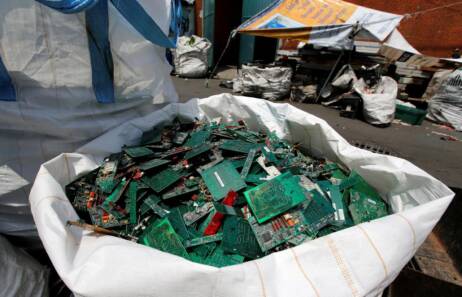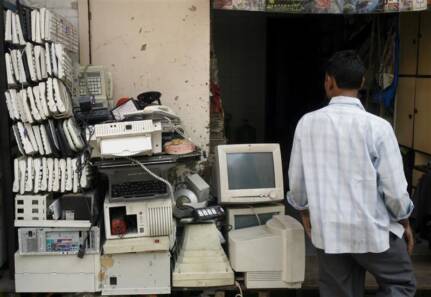Disclaimer*: The articles shared under 'Your Voice' section are sent to us by contributors and we neither confirm nor deny the authenticity of any facts stated below. Parhlo will not be liable for any false, inaccurate, inappropriate or incomplete information presented on the website. Read our disclaimer.
This story has been submitted by Fawad Feroz.
Recent progress in technology has made it easy to make cheap devices that have benefited our society. However, the growth of the electronics industry has also increased the issue of e-waste that needs recycling.
[adinserter block= “3”]
According to the World Economic Forum, e-waste in landfills releases toxic materials into the environment. It is one of the fastest-growing waste contributors on the planet.
Industry specialists and lawmakers are rushing to find a solution. There are several ways we – as individuals – can play our part in protecting the planet and the life on it. In this article, we’ll discuss the importance and a few ways of recycling e-waste.
What is e-waste?
E-waste, also referred to as e-scrap, and EOL electronic devices include dated mobile phones, computer equipment, televisions, and stereos all of which can be recycled or refurbished yet are still found in landfills. Despite having the tools to reduce their harmful impact, a majority of e-waste is either dumped or burned.
The city has no appropriate system of dumping its e-waste. People are unaware of the health risk. Parents pose finding a toy for their kids from a roadside shop of broken electronic devices on Sundays in Pakistan.
They don’t realize they are buying poison for their kids in the shape of broken/utilized/obsolete electronic toys or gadgets. These things contained harmful metals like lead, arsenic, barium, cadmium, mercury, and so on. These metals may cause genuine medical problems.

A report of the Basel Action Network (BAN) developing nations like Pakistan, India, Taiwan, and some African nations get the e-waste. The report attempts to battle the harmful material cases that 50 to 80 percent of e-waste generated in the West.
It is an open secret that developed countries ‘dump’ their e-waste to developing countries. The formal recycling of this waste is expensive. Meanwhile, in developing countries cheap labor and informal recycling methods are available.
Our cities fast becoming a dumping ground for electronic waste of many western countries. One can find shops selling broken/used electronics everywhere.
Environment experts guarantee the electronic devices have hidden dangers once they become e-waste. They state poisonous components in electronic devices represent are dangerous.
[adinserter block= “10”]
Experts also uncover substantial metals, for example, lead, barium, and cadmium. They can be unsafe for health if they enter the water system. These materials can damage the human nervous and respiratory systems.
E-waste in Pakistan
The landfill site in Lahore is the only scientific landfill site in the country and that also doesn’t have any solution to e-waste.
“We receive mix waste at the landfill and we dump it as it is,” says Jamil Khawar, spokesperson Lahore Waste Management Company (LWMC).
According to the Basel Action Network, developed countries send in excess of 500,000 utilized PCs to Pakistan yearly. Just an expected 15 to 40 percent of the PCs are in usable condition. Meanwhile, the rest is used again in risky conditions.
Environmentalists say once these harmful materials are at a landfill site, they begin leaking out into nature.
Outside the city, there is no law or regulation to stop the import of e-waste into the province as there is no law or SOP for recycling of this waste.

Solution: Recycling e-waste
The following is why you should always recycle your e-waste:
- Toxic materials: old electronic devices contain toxic substances like cadmium, chromium, and mercury. The processing is required to ensure such substances don’t go into the environment.
- Waste management: a small product life cycle coupled with an increasing number of gadgets has led to a sharp rise in solid waste materials.
- Hazardous waste: since e-waste is offshored to poor countries where the labor is cheap, residents are exposed to toxins that pose health risks.
- Raw materials: only 10-15% of gold in e-waste is recovered. It is ironic as the metal deposits found in the waste are 40-50 times richer than the natural ores.
[adinserter block= “4”]
There’s another way to safely let go of your electronics without harming the environment and that’s by selling them online. For example, people purchase a new iPhone while the old model is still in good condition. They dispose of the old phone which gets them money to upgrade to a newer model. They do it without spending too much out of the pocket.
Also Read: Earth Takes A Break, Global Pollution Decreases During Covid-19 Spell
What do you think of this story? Let us know in the comments section below!







